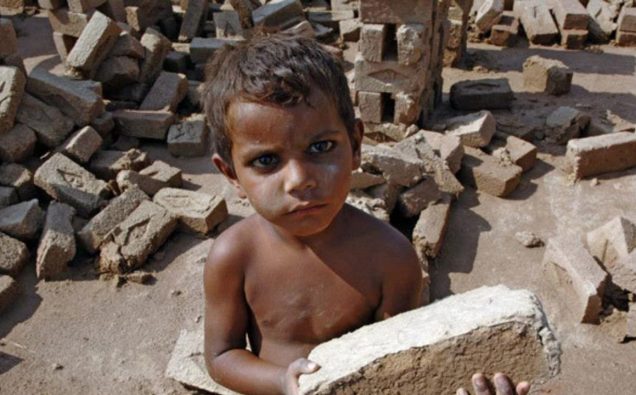
Pakistan, which has oscillated between periods of development and unstable growth, and India, despite sustained growth over several years but with highly uneven distribution of wealth, were placed 150th and 130th respectively on U.N.’s 2018 Human Development Index released Friday.
The annual rankings of countries are measured by combining a variety of indicators of life expectancy, educational attainment and income.
Other South Asian countries also fared poorly on the Index. But Pakistan and India, the biggest economies that are locked in military confrontation and diplomatic strife, ranked low despite their economic and human resource promises. Both countries are nuclear-armed and divert huge national resources to defense spending. The unresolved Jammu and Kashmir dispute remains a flashpoint.
Pakistan ranked lower than Bangladesh and Nepal. Sri Lanka is the only country rated inside 100 at 76. Bangladesh at136; Maldives: 101, Nepal: 149 and Bhutan at 30 reflected on the dismal state of human development in the country.
Pakistan’s new government – led by Prime Minister Imran Khan – has acknowledged the abysmal conditions of people but also faces a plethora of economic and security challenges to turn around the state of millions of people.
The HDI forms part of the Human Development Report (HDR) 2018, a flagship study, which is released every year by the United Nations Development Program (UNDP).
The 28th edition of the HR, which began in 1990. The first UNDP Human Development Report (HDR) was pioneered under the leadership of the late Dr. Mahbubul Haq, a former Pakistan finance minister. During the period covered by the latest report, Pakistan’s HDI value was 0.562; life expectancy 66.6 years; average years of schooling 5.2 years and gross national income per capita $ 5,311.
Oil-rich Norway, Switzerland, Australia, Ireland and Germany led the ranking, while Niger, the Central African Republic, South Sudan, Chad and Burundi have the lowest scores in the HDI’s measurement of national achievements in health, education and income.
The report highlights a number of points. It looks at the widening gap in real terms — both among and within countries – noting that a child born in Norway today – the country with the highest human development index (HDI) – can expect to live beyond the age of 82, and spend almost 18 years in school. But the same child, if born in Niger – the lowest HDI – can expect only to live to 60, with just five years of formal education.
“While these statistics present a stark picture in themselves, they also speak to the tragedy of millions of individuals whose lives are affected by inequity and lost opportunities, neither of which are inevitable,” Achim Steiner, the Administrator of the UN Development Program (UNDP), which released the report.
Inequality continues to plague many countries, including in some of the wealthiest ones, but it ends up taking a much bigger toll on countries with lower HDI levels; with low HDI countries losing almost a third of their human development capacity. For countries with a high HDI, the average loss is 11 per cent.
The striking differences both within and among countries, are stifling progress and the trend can be seen again and again, according to UNDP.
“Inequality in all its forms and dimensions, between and within countries, limits people’s choices and opportunities, withholding progress,” Selim Jahan, Director of the Human Development Report Office at UNDP, explained.
A key sources of inequality within countries is the gap in opportunities, achievements and empowerment between women and men. On average, the HDI for women is 6 per cent lower than that for men, notes the report.
And when women are working, their unemployment rates are 24 per cent higher than their male counterparts. Women globally also do much more unpaid domestic and care work than men.Furthermore, while there has been “laudable progress” in the number of girls attending school, there remain big differences in other key aspects of men and women’s lives – for instance labour force participation rates for women globally are lower than for men – 49 per cent, versus 75 per cent.
“Women’s empowerment remains a particular challenge,” underscored UNDP.
The Human Development Report 2018 update also shows “tremendous” variation between countries in quality of education, healthcare and many other key aspects of life.
This quality-difference can be illustrated by looking at the number of students per teacher, in primary schools. Sub-Saharan Africa has, on average, 39 pupils per teacher while in developed regions, there is an average of one teacher for every 16-18 primary school pupils.
Similar difference exists in terms of health care: OECD (Organization for Economic Cooperation and Development) countries and East Asia and the Pacific have, on average, 29 and 28 physicians for every 10,000 people respectively. In South Asia overall, there are only eight per 10,000, falling to less than two, in Sub-Saharan Africa.
“Much of the world’s attention is on data that tells only a part of the story about people’s lives,” said Mr. Jahan, highlighting that it is clearly not enough simply to count how many children are in the classroom. The important dimension is to know whether they are learning anything.

















